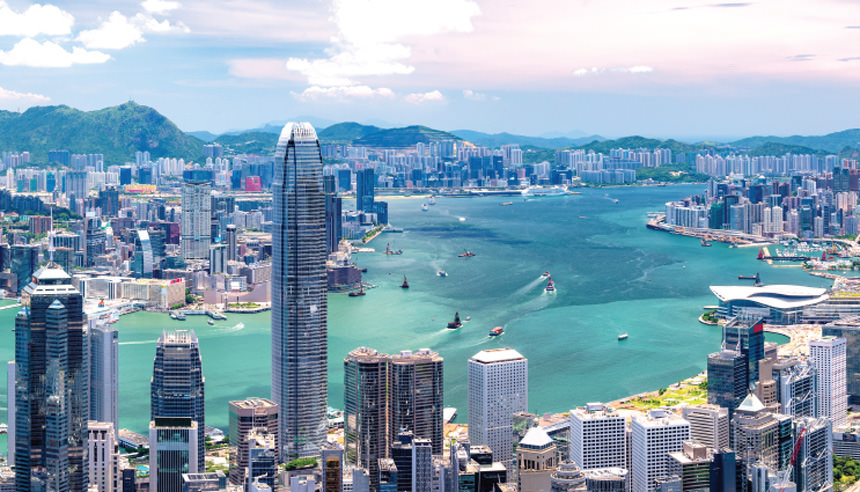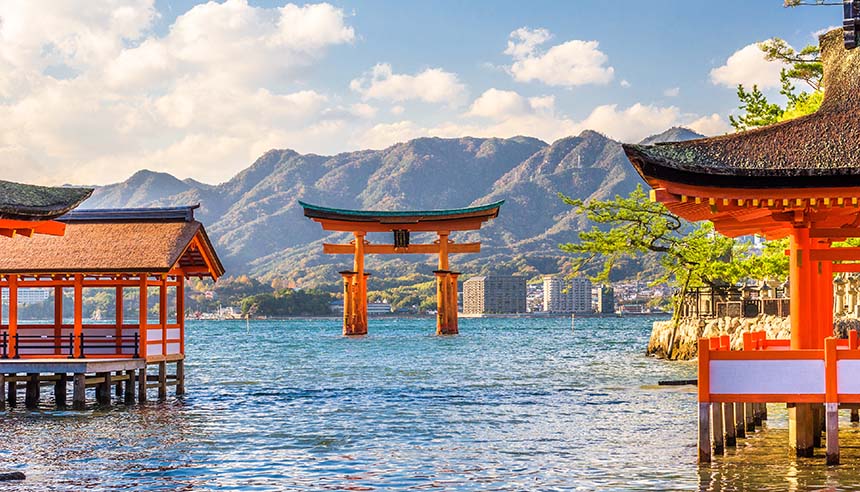Takamatsu
Getting to know Takamatsu
The seaside city of Takamatsu lies on Shikoku Island, towards the southeast of Japan. Historically a port city, Takamatsu thrived as a political and economic centre during the Edo Period — evidenced by the remains of the once-majestic Takamatsu Castle.
The city is still an important transport and economic hub, and these days it’s seamlessly connected to the rest of the country by rail lines, bridges and highways. Due to its former role as the “Gateway to Shikoku Island”, Takamatsu was bombed in World War II — a tragic event that destroyed nearly 80 percent of the city. Over 50 years later, Takamatsu has rebuilt itself and continues to grow.
This southern city has expanded to become one of the region's largest but it still has a small-town, friendly vibe. Though it has its own Kotoden metro system, most of the city’s highlights are best explored by cycling. The bike-friendly city has dedicated bike lanes and easy-to-use rental programmes aimed at tourists.
Sunport Takamatsu
One of the most modern districts in Takamatsu, Sunport Takamatsu is a charming seaside neighbourhood that offers easy access to the main Takamatsu Station and ferry piers. It’s home to the city’s tallest building — the 30-storey Symbol Tower — and there’s a small shopping mall, the Maritime Plaza, as well as pleasant parks nearby.
Kawaramachi
An intriguing mix of old and new, Kawaramachi is centrally located in Takamatsu City. This is where you'll find the main Kotoden train station, as well as many transportation connections. The surrounding streets showcase a charming side of the city that’s slower paced and more residential. Of course, if it’s the action you’re after, you’re not far from buzzing restaurants, shopping arcades and main attractions.
Yashima
This scenic plateau is actually built on hardened lava from the Yashima-ji mountain. It’s a popular place for sightseeing, as well as a peaceful place to stay the night. There’s a popular museum in the area called Shikoku Mura, which tells the story of Takamatsu through cultural artifacts, paintings, and preserved Edo-period buildings such as farmhouses, workshops and even a kabuki theatre. You’ll also find several temples, shrines, an aquarium, and a 3-kilometre-long promenade by the water.
Ritsurin Garden
Built during the Edo Period, this beautiful old garden is considered one of the most scenic places in Takamatsu, if not all of Japan. You can explore the space for hours, encountering peaceful ponds rolling hills, century-old trees and romantic pavilions along the way. It’s covered in cherry blossoms come springtime, and the foliage looks lovely in the fall as well. While you’re there, stop into Kikugetsu-tei teahouse for refreshment and to admire the view.
Takamatsu Castle
Originally built in 1590 along the shores of Seto Inland Sea, much of Takamatsu Castle was destroyed in the Meiji Period but the Japanese government is currently in the process of reconstruction. For now, you can still see a few parts of the castle inside Tamamo Park, such as the old castle keep, moat walls, a couple of turrets and the tower’s foundation.
Sanuki Udon
Often referred to as Udon Kingdom, Takamatsu is home to thousands and thousands of noodle shops, serving up the region’s famous Sanuki udon. These noodles, available throughout Kagawa Prefecture, are a total treat. Setting it apart from other udon varieties, the noodles are made with locally grown wheat that creates a chewy yet firm texture.
Ogijima
A quick ferry ride will bring you to this barely touched island, which is home to a small village of just 200 people. Thanks to its manageable size — just 2 kilometres long and 1 kilometre wide — you can easily explore on foot. There’s a photogenic lighthouse to the north, two ancient shrines on the southern side of the island near the ferry terminal, and lush greenery on all sides.
Go shopping
Takamatsu claims to have one of the longest covered shopping arcades (aka “shotengai”) in all of Japan, stretching 2.7 kilometres from Ritsurin Garden to Takamatsu Castle. It’s packed with vibrant shops, eateries and even some upscale shops such as Coach and Louis Vuitton. The intersecting streets along the way are worth exploring too, as they house tiny udon noodle shops and under-the-radar boutiques.
A buzzing business centre, Takamatsu has no shortage of accommodation. You can find something for every budget and style, from contemporary business hotels, casual guesthouses, hostels, traditional ryokans, hot spring resorts and luxurious hotels.
Even the most affordable ryokans typically offer excellent Japanese hospitality and customary services, such as Japanese style tatami rooms, tea tables, complimentary breakfast, and even kimono-style robes for you to wear to the in-house onsen baths.
While most of the hotels are around the city centre, you can look farther afield to the nearby peninsulas and islands if you want a more adventurous getaway. For example, just about 15 minutes away by car, Shionoe-onsen-kyo Hot Spring Village is a peaceful place to let off some steam. The incredible onsen hot springs offer the ultimate relaxation experience, while the area’s 1,300-year history is steeped in traditional Japanese culture.
Buses are in operations to send passengers from Takamatsu Airport to JR Takamatsu Station in approximately 40 minutes. Services to and from Kotohira, Sakaide, Kochi, Iya Valley and Takamatsu Airport are also available. For a more relaxed and comfortable journey, passengers can also select a 30-minute taxi ride from Takamatsu Airport to JR Takamatsu Station.
Please see Takamatsu Airport website (https://www.takamatsu-airport.com/en/access/index.php) for further transportation details.
Visitors with foreign passports other than Japan and have Temporary Visitor status can purchase All Shikoku Rail Pass from major JR stations in Shikoku like Takamatsu, Matsuyama, Tokushima and Kōchi Station to enjoy unlimited rides on specific trains within the validity period. The pass can also be purchased at designated travel agencies in visitors’ countries and redeem it upon arrival at the JR stations.
DEC - FEB (WINTER)
Average: 2°C - 11°C
Bring extra clothing and dress in layers.
MAR - MAY (SPRING)
Average: 9°C - 19°C
Don’t forget your jacket.
JUN - AUG (SUMMER)
Average: 22°C - 30°C
Bring a sunscreen.
SEP - NOV (AUTUMN)
Average: 14°C - 23°C
Humid and windy. Take a cardigan with you.
Currency
Japanese Yen (JPY)
Electricity
100V 50Hz
Language
Japanese, English
Timezone
UTC+9
Tel code
+81
Religion
Shinto


